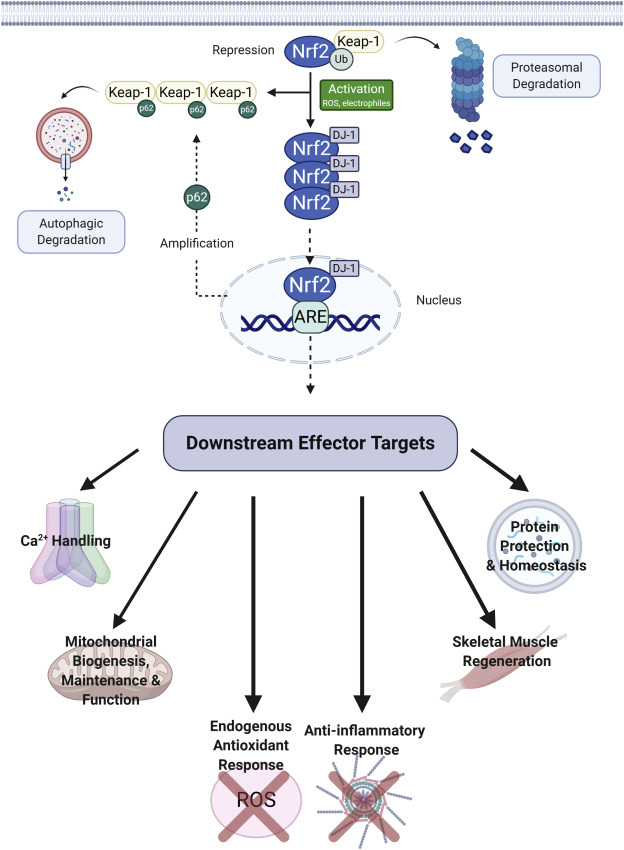Elsevier,
Redox Biology, Volume 38, January 2021
Imbalances in redox homeostasis can result in oxidative stress, which is implicated in various pathological conditions including the fatal neuromuscular disease Duchenne Muscular Dystrophy (DMD). DMD is a complicated disease, with many druggable targets at the cellular and molecular level including calcium-mediated muscle degeneration; mitochondrial dysfunction; oxidative stress; inflammation; insufficient muscle regeneration and dysregulated protein and organelle maintenance. Previous investigative therapeutics tended to isolate and focus on just one of these targets and, consequently, therapeutic activity has been limited. Nuclear erythroid 2-related factor 2 (Nrf2) is a transcription factor that upregulates many cytoprotective gene products in response to oxidants and other toxic stressors. Unlike other strategies, targeted Nrf2 activation has the potential to simultaneously modulate separate pathological features of DMD to amplify therapeutic benefits. Here, we review the literature providing theoretical context for targeting Nrf2 as a disease modifying treatment against DMD.
Elsevier,
Journal of Integrative Agriculture, Volume 20, January 2021
Using China Health and Nutrition Survey data, this study employs a consistent two-step quadratic almost ideal demand system model, with addressed problems of endogeneity of total expenditure and zero shares, to estimate the food demand elasticities among adults in rural areas with regard to the different income strata.
Elsevier, Journal of Sexual Medicine, Volume 17, December 2020
Background: Sexual dysfunction and sexual distress are common during pregnancy, but the effects of exposure to sexual violence on sexual dysfunction and sexual distress in pregnant women is unknown. Aim: The aim of this study was to determine the effects of sexual violence on female sexual dysfunction and sexual distress. Methods: This is a descriptive study. Data were collected between December 2019 and April 2020 from 605 pregnant women.
Elsevier, Sustainable Materials and Technologies, Volume 26, December 2020
Buildings consume vast amounts of energy and pollute the environment in various ways. Façade is a part of building's architecture that can play a significant role in reducing energy consumption, as well as alleviating its negative environmental effects. Although using smart materials in buildings' facades can help dramatically to attain the mentioned goals, very limited studies have been conducted regarding the mentioned issues. Moreover, existing studies have investigated only a few number of smart materials simultaneously.
Elsevier, Food Quality and Preference, Volume 86, December 2020
Targeted interventions have important under-explored potential for reducing meat consumption. We hypothesized that group-specific interventions targeting reduction for reducer, moderate-hindrance, and strong-hindrance meat eaters would be effective. All participants were randomly assigned to one of three treatment conditions designed for these three meat-eating groups, or to a control condition. Following the intervention, up to 28 days of food diaries were gathered to measure their consumption of animal products, which were weighted according to their greenhouse gas emissions.

